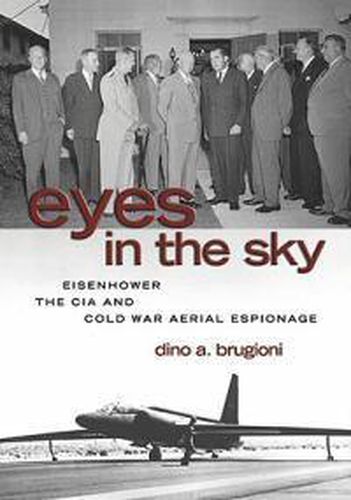Readings Newsletter
Become a Readings Member to make your shopping experience even easier.
Sign in or sign up for free!
You’re not far away from qualifying for FREE standard shipping within Australia
You’ve qualified for FREE standard shipping within Australia
The cart is loading…






Dwight D. Eisenhower’s public image was that of a president who preferred to play golf rather than to actively engage in areas like foreign policy. In reality, however, he was highly involved in building an effective and technologically advanced intelligence organisation to face the challenges of the Cold War.
When Eisenhower became president, he had very few reliable intelligence sources with which to assess Soviet strategic capabilities or to monitor an international crisis. Faced with this serious limitation in intelligence, he took action to utilise all available resources and to spur the development of surveillance technology.
While a wide variety of intelligence gathering steps were initiated and discussed under Eisenhower’s directive, few provided current information. So Eisenhower relied on the Technological Capabilities Panel for reconnaissance recommendations and they proposed the concept of the high-altitude, surveillance air craft known as the U-2. A contract was let and 8 months later it was a flying machine, a feat unparalleled in aviation history. Five U-2 flights over Soviet long-range bomber bases in a month in 1956 dispelled the bomber gap. Subsequent flights provided a wealth of data on Soviet missile and nuclear efforts. Eisenhower used this U-2 derived data in dealing with the Suez, Lebanon, Chinese Off Shore Islands, Tibet, Indonesia, East Germany, Hungary, Vietnam/Laos and Cuba crisis.
Drawing on his CIA career as one of the world’s premier experts on aerial and spatial reconnaissance, best-selling author Dino A. Brugioni presents the inside story about Eisenhower’s aerial espionage program.
$9.00 standard shipping within Australia
FREE standard shipping within Australia for orders over $100.00
Express & International shipping calculated at checkout
Dwight D. Eisenhower’s public image was that of a president who preferred to play golf rather than to actively engage in areas like foreign policy. In reality, however, he was highly involved in building an effective and technologically advanced intelligence organisation to face the challenges of the Cold War.
When Eisenhower became president, he had very few reliable intelligence sources with which to assess Soviet strategic capabilities or to monitor an international crisis. Faced with this serious limitation in intelligence, he took action to utilise all available resources and to spur the development of surveillance technology.
While a wide variety of intelligence gathering steps were initiated and discussed under Eisenhower’s directive, few provided current information. So Eisenhower relied on the Technological Capabilities Panel for reconnaissance recommendations and they proposed the concept of the high-altitude, surveillance air craft known as the U-2. A contract was let and 8 months later it was a flying machine, a feat unparalleled in aviation history. Five U-2 flights over Soviet long-range bomber bases in a month in 1956 dispelled the bomber gap. Subsequent flights provided a wealth of data on Soviet missile and nuclear efforts. Eisenhower used this U-2 derived data in dealing with the Suez, Lebanon, Chinese Off Shore Islands, Tibet, Indonesia, East Germany, Hungary, Vietnam/Laos and Cuba crisis.
Drawing on his CIA career as one of the world’s premier experts on aerial and spatial reconnaissance, best-selling author Dino A. Brugioni presents the inside story about Eisenhower’s aerial espionage program.